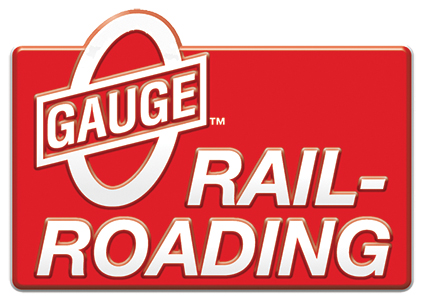Hello, Sailing season is over, sooo..... it's Train Season! As a newbie, I spent last winter building my track set up, and acquiring cool engines, rolling stock, and fun scenery. I built the tables and the trestles. Now, it's all about trouble-shooting why the train stops halfway to the yard. I have older track; mixed O and O-27. Could that be the problem because of how I built a teardrop and neglected to consider the positive and negative switching? Hmm... Thanks for any input. I drew a diagram.
Replies sorted oldest to newest
The #1 cause of the issue you're describing is a loss of good electrical conductivity between apparently connected track sections.
Assuming you're using 3 rail O track, the 2 outer rails are typically Common (negative if you prefer) and the center rail is Hot. So unlike 2 rail systems, there's no electrical polarity concern with loops that return back on themselves.
Solutions are to first:
- Tighten the rail connections around track joiner pins. This can be done with a pair of pliers.
- Then add more electrical drops along the track. Typically using a distribution block to split each of the Hot and Common wires coming off the transformer so that wire pairs attach to the track roughly every 6 track sections.
Okay. That is good news. Thank you. ![]()
You probably have already observed this... if you're inserting O27 pins into O gauge rail, they won't make good contact because O27 pins are smaller.
I'm not sure whether Lionel ever made a "transition section" to facilitate connecting the two. But you should generally shim up the O27 track to the height of the O gauge. Make sure the alignment is spot-on, and use at least one track screw to anchor each of the opposing sections. Ensure good electrical conductivity by adding jumper wires-- at least one for ground and one for the center rail. If this is a temporary holiday layout, you could use two lockons instead of soldering. My $.02.
I've inserted a short piece of bare copper wire under the insulator paper on the center rails of problem joints.
Jan
You show 2 transformers. Have you split the track into blocks, at least 2 electrically separate sections where only one transformer at a time is in control of each section? Is your drawing depicting a double track layout with 2 independent tracks? You solved the pin size issue, the other is that O is taller than 027 and might need a shim at the meeting point.
Wait, sailing season is over?
You can force O gauge pins into O-27 track, but can't use O-27 pins to mate with O-Gauge track. I mix the two successfully on my layout.
My Lionel Bascule bridge has O gauge track on it, but the layout Uses O27 gauge track (O42, O54 and O72 curves).
I use O pins with half of their length ground down to O27 pin diameter. Great for transition.
If you are using O27 height track with O height track, the O27 will also need to be shimmed to the O height
@CALNNC posted:You show 2 transformers. Have you split the track into blocks, at least 2 electrically separate sections where only one transformer at a time is in control of each section? Is your drawing depicting a double track layout with 2 independent tracks? You solved the pin size issue, the other is that O is taller than 027 and might need a shim at the meeting point.
No, They are not split.
You are all great, thanks for the feedback.
@Kellllly posted:Insulator paper?
Insulator paper is wrapped around the center rail; the black/brown ties are crimped around it. One piece at each tie to electrically insulate the center rail from the outside rails.
@Kellllly posted:No, They are not split.
Now I am confused, unless on your drawing you just drew 2 transformers. If you actually have 2 connected all the time feeding one track not divided into separate blocks where you are back feeding one transformer into the other, that can be a big problem. Maybe you just drew 2 on your drawing.




